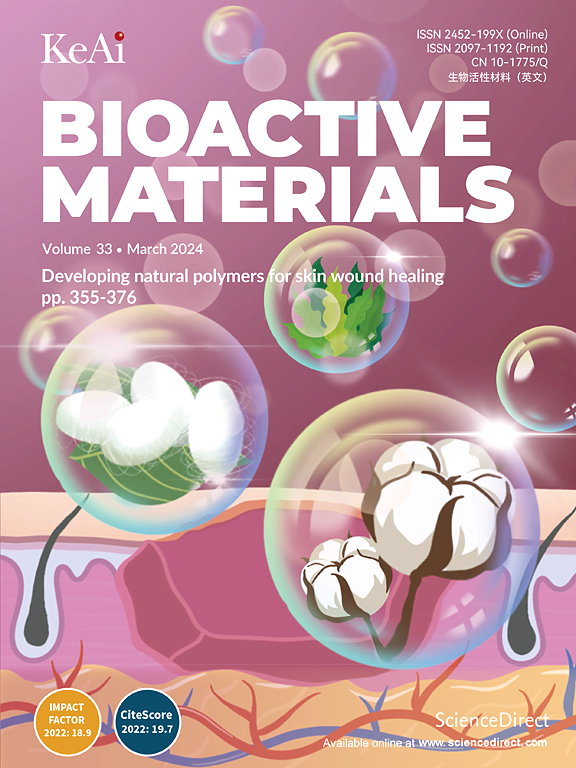Advanced nanotherapies for precision treatment of inflammatory lung diseases
IF 18
1区 医学
Q1 ENGINEERING, BIOMEDICAL
引用次数: 0
Abstract
Inflammatory lung diseases, particularly those associated with acute pulmonary inflammation, represent a major clinical challenge due to their high global morbidity and mortality rates, as well as the absence of effective and safe therapies. While traditional pharmacological interventions have been frequently used for managing acute inflammatory lung diseases, novel therapeutic strategies are urgently needed to improve clinical outcomes. Recently, advanced nanotherapies have emerged as a promising paradigm for targeted treatment of inflammatory lung diseases, leveraging the unique pathophysiological features of acute pulmonary inflammation, characterized by excessive inflammatory mediator production and robust immune cell infiltration. This review first outlines the pathogenic mechanisms and pathological microenvironment linked with acute lung inflammation. Then different bioresponsive nanocarriers are comprehensively summarized and discussed, with a particular emphasis on inflammation-responsive nanotherapies engineered for modulating acute pulmonary inflammation. Furthermore, innovative biomimetic nanotherapies, such as those based on cell hitchhiking, cell membrane coating, and extracellular vesicles, are critically examined. Finally, we highlight the key challenges impeding the clinical translation of these next-generation nanotherapies for acute lung inflammation and propose potential avenues for future research.

精密治疗炎性肺部疾病的先进纳米疗法
炎性肺部疾病,特别是与急性肺部炎症相关的疾病,由于其全球发病率和死亡率高,以及缺乏有效和安全的治疗方法,是一项重大的临床挑战。虽然传统的药物干预经常用于治疗急性炎症性肺病,但迫切需要新的治疗策略来改善临床结果。最近,先进的纳米疗法已经成为靶向治疗炎症性肺部疾病的一个有希望的范例,利用急性肺部炎症的独特病理生理特征,其特征是过度的炎症介质产生和强大的免疫细胞浸润。本文首先综述了急性肺部炎症的发病机制和病理微环境。然后全面总结和讨论了不同的生物反应性纳米载体,特别强调了用于调节急性肺部炎症的炎症反应性纳米疗法。此外,创新的仿生纳米疗法,如基于细胞搭便车、细胞膜涂层和细胞外囊泡的纳米疗法,也得到了严格的研究。最后,我们强调了阻碍这些下一代急性肺部炎症纳米疗法临床转化的关键挑战,并提出了未来研究的潜在途径。
本文章由计算机程序翻译,如有差异,请以英文原文为准。
求助全文
约1分钟内获得全文
求助全文
来源期刊

Bioactive Materials
Biochemistry, Genetics and Molecular Biology-Biotechnology
CiteScore
28.00
自引率
6.30%
发文量
436
审稿时长
20 days
期刊介绍:
Bioactive Materials is a peer-reviewed research publication that focuses on advancements in bioactive materials. The journal accepts research papers, reviews, and rapid communications in the field of next-generation biomaterials that interact with cells, tissues, and organs in various living organisms.
The primary goal of Bioactive Materials is to promote the science and engineering of biomaterials that exhibit adaptiveness to the biological environment. These materials are specifically designed to stimulate or direct appropriate cell and tissue responses or regulate interactions with microorganisms.
The journal covers a wide range of bioactive materials, including those that are engineered or designed in terms of their physical form (e.g. particulate, fiber), topology (e.g. porosity, surface roughness), or dimensions (ranging from macro to nano-scales). Contributions are sought from the following categories of bioactive materials:
Bioactive metals and alloys
Bioactive inorganics: ceramics, glasses, and carbon-based materials
Bioactive polymers and gels
Bioactive materials derived from natural sources
Bioactive composites
These materials find applications in human and veterinary medicine, such as implants, tissue engineering scaffolds, cell/drug/gene carriers, as well as imaging and sensing devices.
 求助内容:
求助内容: 应助结果提醒方式:
应助结果提醒方式:


